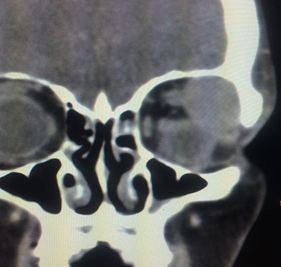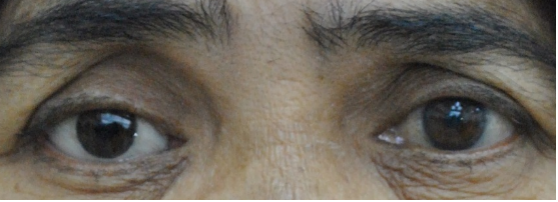Orbital (eye socket) Diseases/Disorders
Our eyeball and its content are bounded within a bony socket which is made up of several orbital bones. The content of the eye socket is mainly the globe, extraocular muscles, blood vessels, nerves, and fat. There are many disease entities that may arise from within this confined space. For example, orbital tumours, orbital inflammation & infection, orbital fractures,
View Images
Orbital Tumour Surgery
Any tumour mass can occur within the bony socket of the eye. It may occur as a primary tumour or secondary tumour (metastatic disease). It is also essential to know the difference between a benign and malignant tumour. After discussing the symptoms and signs, a detailed clinical examination and some clinical tests, Dr Nazila will order for an imaging such as CT scan or MRI and advise for surgery.
View Images
Orbital Infection/Inflammation
Orbital cellulitis is an orbital infection of the soft tissues within the eye socket. It is most often due to an extension of infection from nearby sinuses. It can also be caused by direct infection following local injury such as insect bite and penetrating eyelid injuries. Spread of infection from the face or teeth via blood can also be the cause. Patients may present with blurred vision, double vision, eye pain, bulging eye, eyelid swelling and redness. Fever may accompany the other symptoms. Diagnosis is based on history, clinical examination and imaging such as CT scan or MRI. First line of treatment is systemic antibiotics and sometimes surgical drainage may be required.
View Images
Thyroid Disease
Thyroid eye disease can be as a result of high, normal or low thyroid hormone levels of patients affected with thyroid disease. Depending on the severity of thyroid eye disease, management will be tailored accordingly. Most patients will only require medical treatment but a small proportion will require surgical intervention to correct the appearance and functionality of the eye. In acute cases where medical treatment is refractory, surgical orbital decompression is the only way to salvage a patient's vision. At other times, when thyroid disease has achieved stability, the bulging eye appearance can be alleviated by orbital decompression. Squint from thyroid eye disease can be addressed surgically and eyelid surgery can be performed.
View Images
Evisceration/Enucleation Surgey
Evisceration and enucleation surgery of the eye are types of eye removal surgery which are technically different in approach. Eye removal surgery may be required in cases of a painful blind eye, blind deformed eye, following severe injury or severe eye infection and eye cancer.
Evisceration surgery involves removal of the front clear part of the eye (cornea) and contents of the eye, leaving behind the white part of the eye (sclera) and the eye muscles.
Enucleation surgery involves removal of the entire eye (globe). Only eye muscles are left behind and are attached back to the spherical implant (artificial eyeball).
After at least six weeks of the surgery, an artificial eye or ocular prosthesis will be designed to match the fellow eye and inserted in the healed eye socket. These procedures will not give your vision back but they definitely improve your appearance and boost your self-esteem.
View Images
Eye Socket Reconstruction Surgery
Some patients with artificial eyes or ocular prosthesis may have problems encountered while using the prosthesis. Contracted eye socket is one of the conditions that may occur after some time, following enucleation or evisceration surgery and this may render difficulties in fitting the prosthesis. The artificial eye may be difficult to insert or keep coming out. The orbital implant may also be exposed if there is infection. Eye socket reconstruction surgery is performed to manage the conditions related to post enucleation/evisceration surgeries.
Orbital Trauma Surgery
Injuries to the face as a result of motor vehicle accident, domestic or industrial accident may involve fractures of the orbital and/or facial bones. Oftentimes, patients will present with double vision and blurry vision. If there is evidence of orbital bone fracture with muscle or other content entrapment, these structures will be released and an implant will be placed to secure the fracture site.
View Images
Meet our specialist
Dr Nazila Ahmad Azli
Designation
Consultant Ophthalmologist and Oculoplastic, Lacrimal & Orbital Surgeon
Specialty
Oculoplastic Surgery,
Ophthalmology

















